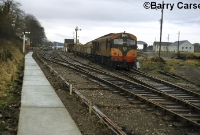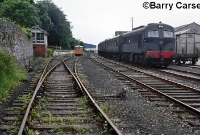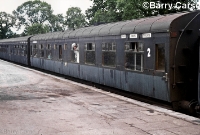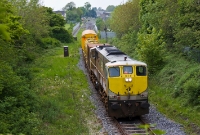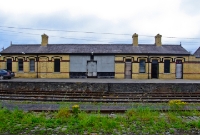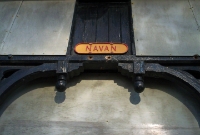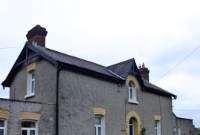Navan
Navan, Co.Meath, was first served by rail in February 1850 when the Dublin & Belfast Jct Railway built a line running from Drogheda to Navan, and eventually to Oldcastle. Taken over by the Great Northern Railway in 1876, the Navan and Oldcastle branch lost its passenger service in April 1958. The section from Navan to Oldcastle was closed completely in 1963, but the line between Drogheda to Navan remains in use to serve the nearby Tara Mines, which dispatches several loaded ore trains each weekday. As yet there are no plans to reinstate passenger services on the ex GNR line, but possibly on the former Midland Great Western line from Clonsilla to Navan Junction, which was closed in April 1963.
Navan Station remains remarkably intact, complete with its single platform and large GNR yellow brick station building. Navan also retains the last operational GNR signal cabin. The freight yard at the station, adjacent to the water tower has been out of use since the late 1970s. At the east end of the station the line crosses the River Boyne on a fine stone built viaduct.
Navan Station remains remarkably intact, complete with its single platform and large GNR yellow brick station building. Navan also retains the last operational GNR signal cabin. The freight yard at the station, adjacent to the water tower has been out of use since the late 1970s. At the east end of the station the line crosses the River Boyne on a fine stone built viaduct.
